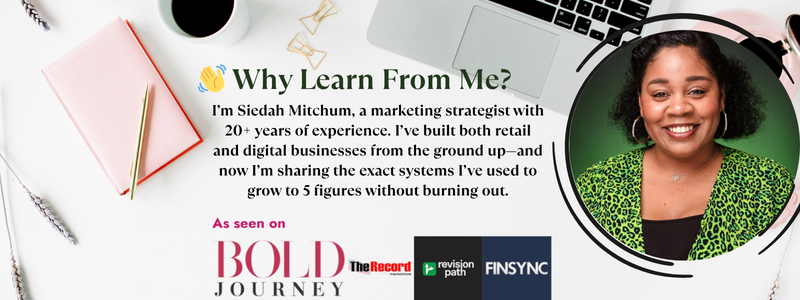
If you’ve been in business for a while, you’ve probably heard the phrase: “Know your why.”
But what does that actually mean?
Your “why” is the deeper reason behind your business — the motivation that fuels you to keep going when things get tough. When you understand your why, you not only stay aligned with your purpose, but you also create messaging that truly connects with your audience.
Let’s walk through how to uncover your why, and then use it to shape the way you talk about your business.
Step 1: Ask Yourself Why You Started
At the surface level, many business owners say they started to “make money” or “be their own boss.” But your true why is deeper.
Ask yourself:
- What inspired me to start this business in the first place?
- What values or beliefs are built into my products or services?
- How does this business support the lifestyle I want to create?
- How do I want my business to impact my customers’ lives?
Step 2: My Example: Her Love Collection
When I started Her Love Collection, it wasn’t just about making candles.
I was inspired by spirituality and divination.
My crystal candles are more than beautiful products — they are tools for relaxation, tranquility, prayer, meditation, and manifestation.
I wanted to create something meaningful for others, while also building a business that gave me flexibility to spend time with my child and the freedom to be creative.
That is my why: to blend creativity, spirituality, and freedom into products that support others on their journey of healing and manifestation.
Step 3: Turn Your Why Into Your Messaging
Once you’re clear on your why, you can weave it into your marketing and content. This makes your business messaging more authentic, and it helps your customers connect with the story behind your brand.
Here’s how you can start:
On Your Website: Share your origin story — what inspired you and why your products matter.
On Social Media: Post about the deeper meaning of your products, not just their features.
In Sales Conversations: Explain how your why connects to your customers’ goals.
Step 4: Messaging Example for Facebook
Here’s how I might use my why in a Facebook post for Her Love Collection:
“Her Love Collection was born out of my love for spirituality, divination, and creativity. I believe candles can be more than just a product — they can be tools for meditation, manifestation, and peace. By offering wholesale crystal candles, I get to help shop owners share these tools with their communities while also living out my own dream of building a flexible, family-centered business. When you stock Her Love Collection candles, you’re not just filling your shelves — you’re offering your customers products with meaning.”
Notice how this blends my why (spirituality, creativity, freedom) with my customer’s why (offering meaningful, fast-selling products to their community).
Step 5: Create Your Own Why Statement
Here’s a simple prompt you can use to define your why:
“I started my business because I believe ________. Through my products/services, I want to help ________. This business allows me to ________.”
Fill in the blanks, and you’ll have a clear why statement you can use everywhere in your messaging.
Final Takeaway
Your why is more than just a personal story — it’s the heartbeat of your brand. When you can clearly communicate why you do what you do, your message becomes magnetic. Customers don’t just buy your product, they buy into your mission.
So take the time to uncover your why, write it down, and weave it into everything you share. Your content will feel more authentic, and your audience will feel more connected to your brand.
Call to Action Idea:
“Drop your why statement in the comments — I’d love to hear what drives your business!”
The Deeper Motivation Question
“Beyond money or independence, what personal values, beliefs, or passions inspired you to start this business? How do those show up in the products or services you offer?”
The Customer Connection Question
“What impact do you want your business to have on your customers’ lives? How do you want them to feel after using your product or service?”
The Lifestyle + Legacy Question
“How does this business support the lifestyle you want now (ex: flexibility, creativity, family time), and what kind of long-term legacy or change do you want it to create?”










Leave a Reply